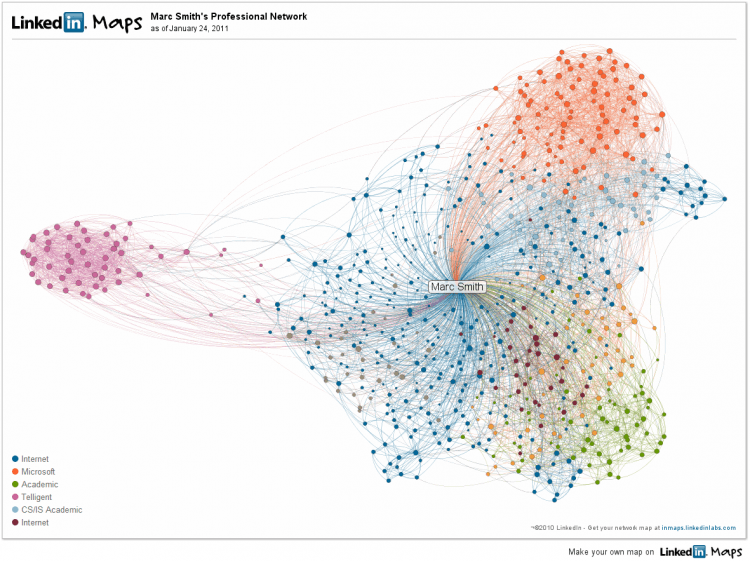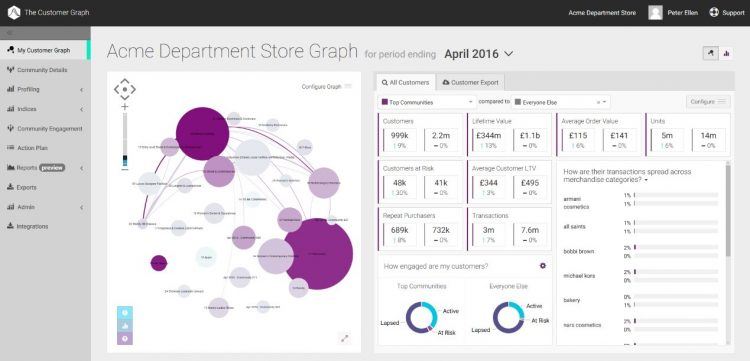
The APAC team at Big Data for Humans. Photo credit: Big Data for Humans.
If you’re the kind of person who regularly buys kale and protein powder at the supermarket, what kind of offers would appeal to you? What other products might you enjoy? And how much are customers like you worth to that supermarket?
Those are the kinds of questions that Big Data for Humans, a London-based marketing analytics startup, is trying to answer.
“Traditional segmentation is done on a best-fit basis using a cookie cutter approach,” Peter Ellen, CEO of Big Data for Humans, tells Tech in Asia. “Effectively you’re building a big pie chart of customers.”
“We build a network of customers and it’s not directed by people – it happens automatically,” he explains. “We find the natural structure [that occurs] within a customer base.”
The startup’s software leverages graph theory, which is used to model different relationships between objects. For example, graphs are used to represent social networks like Twitter, where following someone or being followed are types of relationships that connect two users.

A graph of a LinkedIn user’s professional network. Photo credit: Marc Smith.
In digital marketing, graphs can map out relationships and similarities between customers, not just specific attributes, like age and gender. For instance, Big Data for Humans’ software links customers using transaction data; it can cluster them by purchasing behavior. This lets companies segment their customers into highly specific groups. A department store, for example, might have an entire segment dedicated to customers who love Michael Kors bags.
The startup’s software can also identify customers at risk of being lost to a competitor using the frequency and history of their transactions.
“Unless you have a proprietary view of who your customers are that’s specific to your business, then it’s very hard to leverage any kind of competitive advantage,” says Peter.
Before co-founding Big Data for Humans with Steven Rose – the CTO of the startup – Peter co-founded Maxymiser Inc., a cloud-based marketing service later acquired by Oracle. In his time at Maxymiser and Oracle, Peter found that marketing clients often had a generic understanding of their customers that was no different from their competitors.
“In the hotel industry, for instance, if you asked who their customers were, they would give you the same answer, like business, leisure, group bookings, etc,” says Peter. “If you don’t understand what customers you’ve got, then you can’t design appropriate offers for them.”
Because the startup’s software can automatically generate customer graphs from client data, deploying a custom analytics solution takes under three weeks, says Peter. Clients pay by yearly subscription, with prices varying according to the number of customers. So far, the startup has been targeting companies in the retail, travel, and hospitality sectors.

Analytics dashboard for Acme department store. Photo credit: Big Data for Humans.
Founded in 2014, the London-based startup is now taking its customer analytics service to Asia. On Thursday, Big Data for Humans launched its new APAC headquarters in Singapore, where it will partner with AirAsia, a budget airline company and one of the startup’s investors.
In October, the startup raised a US$2.2 million seed round which will go towards expanding its business throughout the region. Moving forward, the company will also invest in R&D. In particular, Big Data for Humans will look at incorporating social media and networking data into its analytics platform.
This post No pie charts, please: this startup brings graph-based customer analytics to Asia appeared first on Tech in Asia.
from Tech in Asia https://www.techinasia.com/big-data-for-humans-asia-launch
via IFTTT
No comments:
Post a Comment